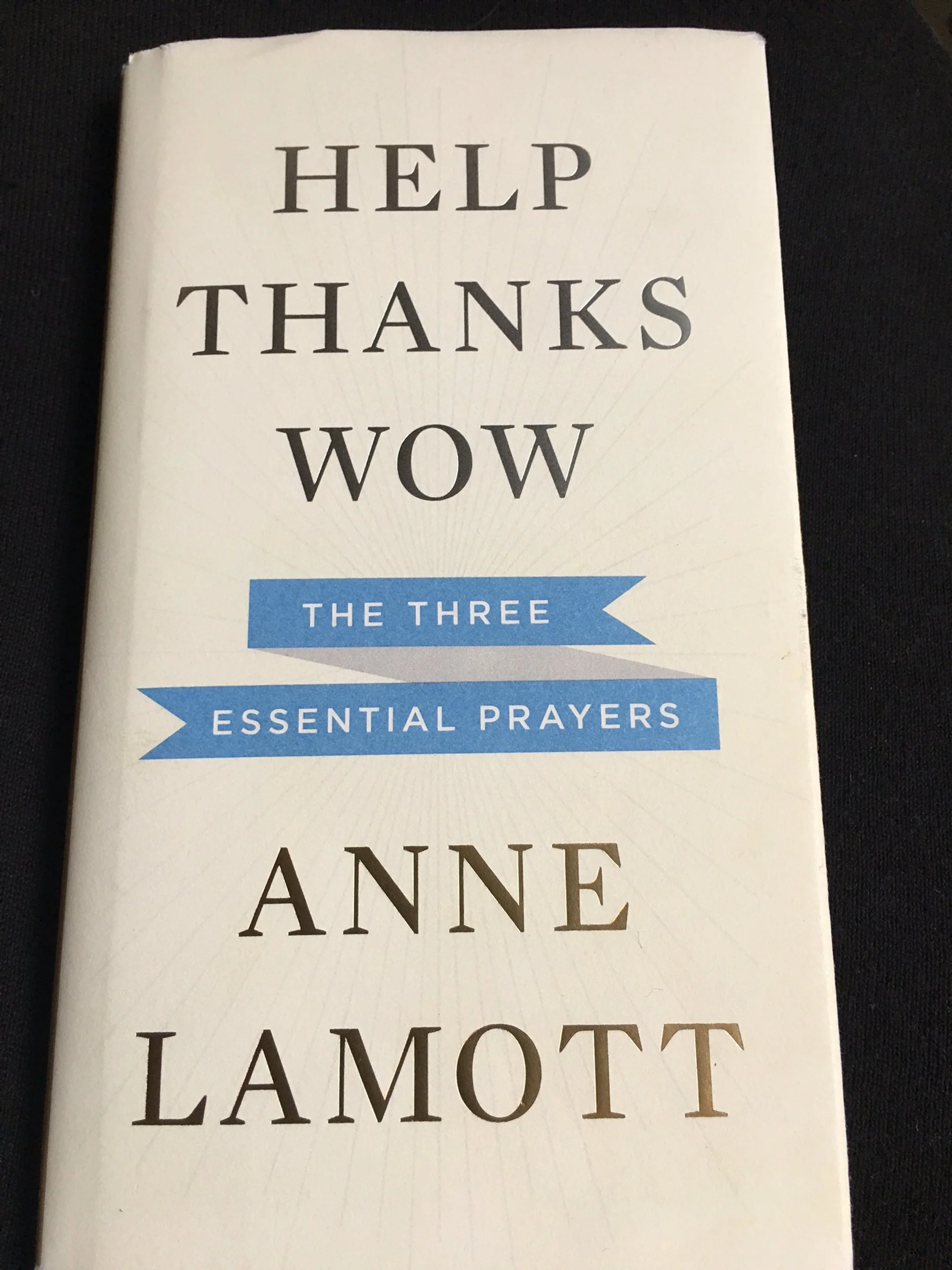Lamott: Prayer
“So prayer is our sometimes real selves trying to communicate with the Real, with Truth, with the Light. It is us reaching out to be heard, hoping to be found by light and warmth in the world, instead of darkness and cold. Even mushrooms respond to light—I suppose they blink their mushroomy eyes, like the rest of us.”—Anne Lamott in Help, Thanks, Wow: The Three Essential Prayers (Hodder & Stoughton, 2001).
When spiritual friends have difficulty with prayer, we discuss our current prayer life and what kind of prayer discipline has been helpful in the past. We discuss the various ways to pray, including walking and praying, praying in silence, using prayer books, Ignatian prayers, Centering Prayer, praying with beads, praying in color, and observing the monastic hours.
Anne Lamott’s book Help, Thanks, Wow is a realistic, humorous, and down-to-earth discourse on praying, organized around three subject lines: giving thanks, asking for help, and praising. The book is filled to the brim with simple “one-liners” to remember and guide us through the day.
One of my favorites is, “If one person is praying for you, buckle up. Things can happen.” Another is, “The difference between you and God is that God never thinks he is you.” Finally, she reminds us that gratitude is not just lifting our arms and waving our hands, as we often see on television, but instead picking up trash, doing what is required, and reaching out to others in need. When we breathe in gratitude, we breathe it out.
Lamott’s section on “Wow” likens that kind of prayer to a child seeing the ocean for the first time. I still remember standing just inside the National Cathedral as a group of fifth-graders walked in. I will not forget one small boy who looked up at the high, vaulted gray stone ceilings and exclaimed: “WOW!” These are uppercase wows.
There are also lower-case wows, such as getting into bed between clean sheets. Lamott suggests poetry is “the official palace language of Wow.” She also reminds us of C. S. Lewis’s view of prayer, that we pray not to change God, but to change ourselves.
My experience is that Lamott consistently stimulates us to adopt new faith practices or reminds us about those we have forgotten. This can bring welcome renewal to our everyday lives.
Joanna. https://www.joannaseibert.com/

